#sooty tern
Explore tagged Tumblr posts
Note
trick or treat!

your tern!! A sooty tern for you :) happy halloween!
30 notes
·
View notes
Text

A pair of well-dressed birdies!
Sooty terns reside throughout tropical oceans around the globe, breeding on islands near the equator. They lay a single egg in a shallow scrape of a nest on a rocky or coral island. They take fish from the surface of the water, typically targeting dense schools far out at sea. Sooty terns can spend a whopping 3 to 10 years on the wing at sea—they can’t even float, since they don’t have the appropriate oil in their feathers.
Little auks, or dovekies, live in the North Atlantic, breeding in the Arctic and wintering slightly further south. They forage underwater for crustaceans, primarily copepods, usually in the open ocean but closer to shore during nesting. They nest in large colonies on coastal cliffsides, laying a single egg in a rocky crevice.
20 notes
·
View notes
Text
saw creatures doing these and made bunch of them for myself bc they’re silly and fun :3
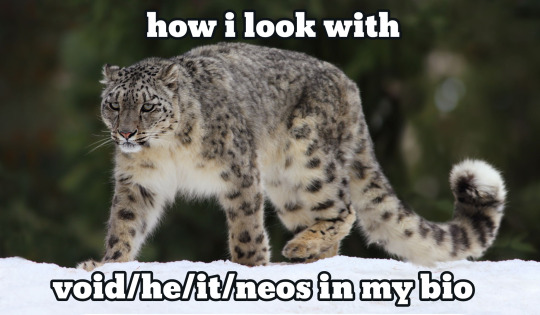


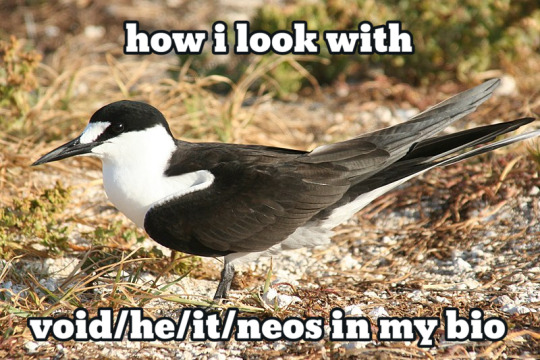
#i’m also some kind of domestic cat kin and polymorphkin and demonkin/fallen angel kin and godkin/angelkin but yk#i’m still not sure what kind of domestic cat i am aynway#maybe a black one. or a pointed one. or a karpati...#not sure#and i’m not 100% sure abt being wolverinekin either but still#catkin#wolfkin#wolverinekin#birdkin#sooty tern kin#snow leopard kin#tundra wolf kin#cat therian#wolf therian#bird therian#wolverine therian#sooty tern therian#snow leopard therian#tundra wolf therian#divine rambles. ` 🕊#the divine — basil. ` 🕊#polykin#poly therian
93 notes
·
View notes
Text

So, do you think we should move?
Hamelin Bay
On my travels
#original photographers#nature photography#wildlife photography#bird photography#Sooty Terns#Hamelin Bay#on my travels
35 notes
·
View notes
Text

some bird studies from a while ago!
#my art#do not copy trace or steal#umm. how do i . tag non fanart art#artists on tumblr#art#bird#little tern#sooty shearwater#tern#shearwater#HOW DO I TAG THIS cries#i love doing messy studies like this its very calming but rarely do i ever share them like this but im still very happy with how these#came out ^_^
46 notes
·
View notes
Text
Tiny Indian Ocean Island Shows How Quickly Seabirds Recover When Invasive Predators Are Removed https://www.goodnewsnetwork.org/tiny-indian-ocean-island-shows-how-quickly-seabirds-recover-when-invasive-predators-are-removed/

18 years after rats were eradicated, Tromelin Island off the coast of Madagascar is a thriving colony of seabirds once again.
The same story happened over and over during the age of exploration: Europeans brought rats or rabbits on board their ships and dumped them on delicate, pristine island ecosystems.
Hundreds of islands became desolate wastelands this way, damage that has for the most part been reversed, as GNN has reported, in one of the greatest conservation stories ever told.
Now, this small teardrop of sand, rock, and palm trees in the southern Indian Ocean, is the most recent example of conservationists being able to completely rewild a landscape back to a period before European contact.
Spanning just 1 square kilometer, Tromelin Island is now home to thousands of breeding pairs of 7 seabird species like the masked and red-footed boobies.
By 2013, these two species had doubled in number from the precarious, rat oppressed lows of just a handful in 2004. In the subsequent 9 years, white terns, brown noddies, sooty terns, wedge-tailed shearwaters, and lesser noddies all came back on their own initiative.
Matthieu Le Corre, an ecologist at the University of Reunion Island, told Hakkai Magazine how, in some cases, restoring seabird populations can be a tricky thing based on the particular species’ nesting habits.
On other islands where Le Corre has worked, they’ve had to install robotic bird calls and life-size replicas to convince the birds the island is a safe place to nest again. But Tromelin Island needed no such help, since these terns, noddies, and boobies are much more dispersed in their nesting patterns.
“In terms of conservation, it’s a wonderful success,” Le Corre says.
#good news#environmentalism#science#environment#nature#animals#conservation#birds#tromelin island#madagascar#animal protection#baby animals#sea birds#invasive species
1K notes
·
View notes
Text

Geoffrey Buddle - Sooty terns, Denham Bay, Sunday [Raoul] Island, 1906
1K notes
·
View notes
Text

A second illustration for @ics_seychelles featuring #Seychelles Islands seabirds. Shown are Magnificent #Frigatebird Lesser Frigatebird, Brown #Noddy Lesser Noddy, Red-Tailed #Tropicbird White-Tailed Tropicbird, Tropical #Shearwater Wedge-Tailed Shearwater, Sooty Tern, Bridled Tern, Roseate Tern, and White #Tern also called the #FairyTern
287 notes
·
View notes
Text

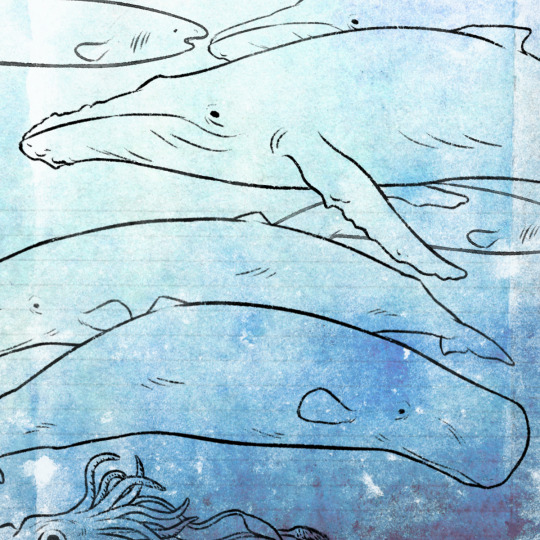
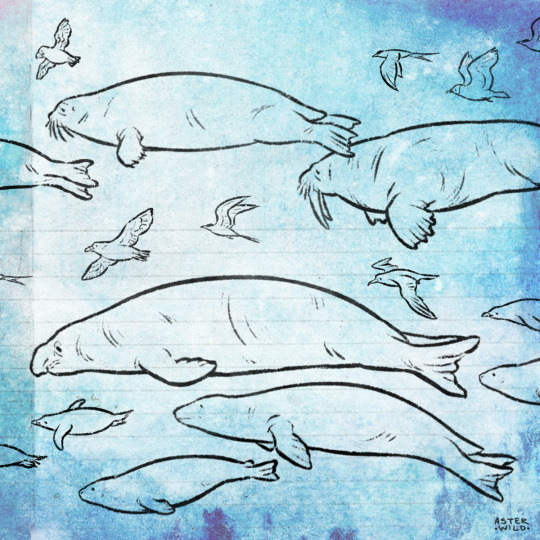
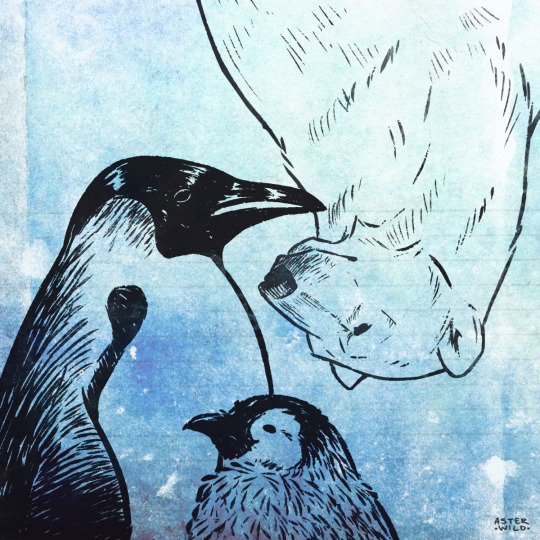
a closer look at the creatures from my marine polar wildlife design
bottlenose whale, harbor porpoise, narwhal, beluga, atlantic white-sided dolphin, minke whale, orca, pygmy right whale, spectacled porpoise, arnoux's beaked whale; greenland shark, humpback whale, sperm whale, colossal squid; atlantic puffin, bearded seal, walrus, arctic tern, sabine's gull, cape petrel, sooty albatross, southern elephant seal, chinstrap penguin, adelie penguin, leopard seal, ross seal; emperor penguins and polar bear
#i put too much effort into that design to not show off the creatures a little more 👍#really missing some notable visual characteristics in my line art-only file sorry lol#id in alt#animals#marine wildlife#whales#seals#penguins#polar bear
84 notes
·
View notes
Text
tumblr trick-or-treat LIGHTNING ROUND
Here we go, I'm going to finish up the remaining trick-or-treat asks from yesterday. Please don't send any more trick-or-treats, Halloween is over and I've spent enough time on this already 😅 Some of the @ tags may not work. It's not my fault, I've tried to edit them. Just tumblr being tumblr.
▬▬▬▬▬ @sex-warlock asked: trick or treat🎃 Happy Halloween! You receive one twin-sailed salp! I hope the binomial name isn't enough for tumblr to decide this post contains content that is only intended for adults! Thetys vagina - Wikipedia ▬▬▬▬▬ @booksbwaybadflower asked: Trick or treat!! Happy Halloween! Have fun with your lesser sooty owl! Lesser sooty owl - Wikipedia ▬▬▬▬▬ @ratpyramid asked: Trick or treat! 🦑🐙🐌 I'll take the choice of emojis as a hint. Here's your neon flying squid! Neon flying squid - Wikipedia ▬▬▬▬▬ @nichegamingweeb asked: trick or treat! 👻
You receive one ghost bat. That's twice the spooky! Ghost bat - Wikipedia ▬▬▬▬▬ @chorus-cat asked: trick or treat ?! :3
Happy Halloween! Here's a little guy who also does a :3 face, a quokka! Quokka - Wikipedia ▬▬▬▬▬ @aptericia asked: are you still taking trick or treaters? If so, trick or treat!! 🎃 (no problem if you don't get to this tho!)
I appreciate your patience! Per your blog title, you are a birb enjoyer, so here is your Bohemian waxwing! Bohemian waxwing - Wikipedia ▬▬▬▬▬ @satan-666s-stuff asked: Trick or treat (no spiders please)
Happy Halloween! Here's an animal that is probably not a spider: a harlequin duck! Harlequin duck - Wikipedia ▬▬▬▬▬ Anonymous asked: Trick or treat, friend!
I hope you see this, since I can't tag you! Enjoy your orange-spotted emerald dragonfly! Orange-spotted emerald - Wikipedia ▬▬▬▬▬ @nineofneals asked: Trick or Treat! Happy Halloween! Here's a pair of Congo peafowl for you! Congo peafowl - Wikipedia ▬▬▬▬▬ @belladonnab asked: Trick or treat!! 🎃🎃🎃
Happy Halloween! I don't know how you feel about spiders, but I found this cute green one for you, a magnolia green jumper! Lyssomanes viridis - Wikipedia ▬▬▬▬▬ @little-bullheaded-shit asked: Trick or treat :D happy Halloween!!! 🎃 Happy Halloween! Your url says you're bull-headed? Here's something that's kind of bull-headed, a Żubroń, a cattle/bison hybrid! Żubroń - Wikipedia ▬▬▬▬▬ @i-am-a-lizard asked: Trick or Treat! Hello lizard! I know lizards love to eat a tasty bug, so here's an eastern ant cricket for you! Myrmecophilus pergandei - Wikipedia ▬▬▬▬▬ anonymous asked: Trick or treat, smell my feet, give me something good to eat! If you don't we don't care, we'll put red ants in your hair!

Woe, southern fire ants upon ye! Southern fire ant - Wikipedia ▬▬▬▬▬ @akaylawithalotofideas asked: Hii! Trick or Treat! <3
Happy Halloween! I have a couple of snow geese for you-- white morph and blue morph! Snow goose - Wikipedia ▬▬▬▬▬ Anonymous asked: The amount of times I have almost accidentally sent people "Trick or Threat" asks instead of "Trick or Treat" probably says something about me! That's some interesting muscle memory! As thanks for not threatening me, here's your Ethopian wolf! Ethiopian wolf - Wikipedia ▬▬▬▬▬ @idkapersoniguess asked: Dare I ask- trick or treat? Have fun with your new hirola (Hunters antelope)! Hirola - Wikipedia ▬▬▬▬▬ @goldenwolfmidna asked: trick or treat!! Happy Halloween! I saw "wolf" in your name and thought an actual wolf was too obvious, so here's an Atlantic wolffish or seawolf! Atlantic wolffish - Wikipedia ▬▬▬▬▬ @blossomaaoc asked: Trick or treat! I hope you like your volcano rabbit! Volcano rabbit - Wikipedia ▬▬▬▬▬ @eclipsing-winter asked: trick or treat !! Happy Halloween! I have an arctic tern for you! Arctic tern - Wikipedia ▬▬▬▬▬ @gummmibears asked: Trick or treat! Happy Halloween! I don't have any gummmi bears, but I have a sun bear! Sun bear - Wikipedia ▬▬▬▬▬ @dreamer-of-serenity asked: Trick or treat! And a very happy Halloween to you! Also, thank you for the amazing blog! Thank you so much! Enjoy your Valentin's sharpnose puffer. Handle with care! Valentin's sharpnose puffer - Wikipedia ▬▬▬▬▬ @xenia12 asked: Trick r treat >:D Happy Halloween! A regal thorny oyster for you! Spondylus regius - Wikipedia ▬▬▬▬▬ @sahara-silver asked: Trick or treat!! I’m a vampire squid this year! Very cool! Here's a less famous squid for you: a ram's horn squid! Spirula - Wikipedia ▬▬▬▬▬ @fan-da-nerd asked: Trick or treat! Happy Halloween! For you, a Galapogos penguin! Galapagos penguin - Wikipedia ▬▬▬▬▬ @ultraluminarious asked: trick or treat !! Happy Halloween! I hope you like your mangrove horseshoe crab! Mangrove horseshoe crab - Wikipedia ▬▬▬▬▬ @glitched-out-mess asked: trick or treat!!!!! Happy Halloween! Enjoy your crab-eating macaque! ▬▬▬▬▬ @emeraldraccoon478 asked: Trick or treat? Happy Halloween! Perhaps you'd like a relative of raccoons, a South American coati? South American coati - Wikipedia ▬▬▬▬▬ Anonymous asked: (A mew appears! Who cares if it doesn't exist, it's here now!) Mew me- Mew! (Translation: Trick or Treat!)
That's okay-- for a while people (in the Western world) weren't sure whether the okapi existed, either! Okapi - Wikipedia ▬▬▬▬▬ @mewdusavt asked: trick or treat! ^.^ Happy Halloween! For you, a yellow-eyed penguin! Yellow-eyed penguin - Wikipedia ▬▬▬▬▬ @justawishaway asked: Tricks and Treats! Both? For you, a colonial organism, a string jellyfish! This siphonophore is also called a long stringy stingy thingy, apparently! Apolemia uvaria - Wikipedia ▬▬▬▬▬ @jack-fruit asked: *sprints up to your porch/hole in a tree last minute and out of breath* Trick or treat!! Don't overdo it! Take some time to chill out with your southern hairy-nosed wombat! Southern hairy-nosed wombat - Wikipedia ▬▬▬▬▬ @eilooxara asked: Everybody's saying you give out the best treats in the whole neighborhood, so trick or treat! Is that so? I hope this bristly millipede lives up to the hype! Polyxenus lagurus - Wikipedia ▬▬▬▬▬ @samwisegamgeeee asked: Trick or treat! Critter or beast! Happy Halloween! Happy Halloween! Here's a lesser rhea for you! Darwin's rhea - Wikipedia ▬▬▬▬▬ @discworldwitches asked: trick or treat! Happy Halloweeen! Enjoy your binocular fish! Winteria telescopa - Wikipedia ▬▬▬▬▬ @mossylemon asked: trick or treat! I'm giving you this weevil i found once
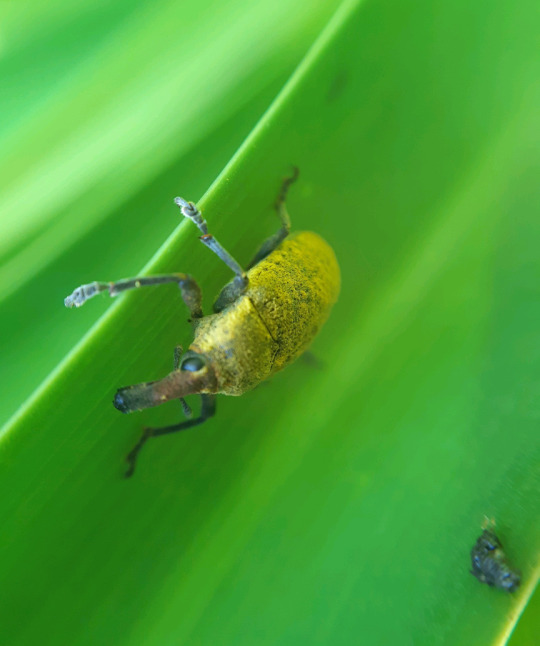
Thank you, I'll treasure them always! I'm giving you a Chacoan mara! Chacoan mara - Wikipedia ▬▬▬▬▬ @arthallea asked: trick or treat :D Happy Halloween! Enjoy your plate-billed mountain toucan! Plate-billed mountain toucan - Wikipedia ▬▬▬▬▬ @len-the-neverending asked: Trick or treat! Happy Halloween! I like your bunny avatar, so here's a Tehuantepec jackrabbit for you! Hares aren't rabbits, but they're lagomorphs, so they're still bunnies, right? Tehuantepec jackrabbit - Wikipedia ▬▬▬▬▬ @ward-leon asked: trick or treat? .w. Happy Halloween! I hope you like your Gila woodpecker! Gila woodpecker - Wikipedia ▬▬▬▬▬ @thebetterjellyfish asked: trick or treat! Here's a better jellyfish: one of two species called the fried egg jellyfish! Phacellophora - Wikipedia ▬▬▬▬▬ @raspberrymoonx asked: trick or treat! Happy Halloween! For you, a great star coral! Montastraea - Wikipedia ▬▬▬▬▬ @chaos-smoothie asked: I hate to bother you aha, but.... Trick or treat? Happy Halloween! I hope you like your guanaco! Guanaco - Wikipedia ▬▬▬▬▬ Anonymous: Trick or treat :3 Happy Halloween! I'm handing you this Argentine horned frog! Argentine horned frog - Wikipedia ▬▬▬▬▬ @starlightsugar asked: Trick or treat :3 Happy Halloween! Here's a common wooly monkey for you! Common woolly monkey - Wikipedia ▬▬▬▬▬ @ashen--dreams asked: trick or treat !! Happy Halloween! For you, a Bobbit worm. Be careful with it! Eunice aphroditois - Wikipedia ▬▬▬▬▬ @reefsharkivist asked: trick or treat! Do you like sharks? For you, a Japanese bullhead shark! Japanese bullhead shark - Wikipedia ▬▬▬▬▬ Anonymous asked: trick or trick Trick or trick? For you, a tiger mosquito! Aedes albopictus - Wikipedia ▬▬▬▬▬ @coolspork asked: Trick or treat! You receive: one Sputnik urchin! Pyllacanthus imperialis - Wikipedia ▬▬▬▬▬ @varian-polis asked: Trick or treat!! Last one... maybe! Unless tumblr is hiding more asks from me. You receive a fat sea biscuit! Clypeaster rosaceus - Wikipedia That's all! If I missed anyone, it was a genuine mistake, definitely not intentional. I will not be answering any more trick-or-treat asks after this.
#long post#tumblr trick or treat#sorry if you don't like the animal you got but that's the nature of “i will send you a random animal.” they can't all be charismatic
45 notes
·
View notes
Text
BOTD: Brown Noddy

Photo: Isaac Sanchez
"Most terns are white with dark caps, and have forked tails. The Brown Noddy, like an anti-tern, is dark with a white cap, and has a wedge-shaped tail. At sea it flies low, with deep wingbeats; when perched, it has a solemn and lethargic look. Widespread in tropical oceans, including around Hawaii. Birders know this species mostly from its colony at the Dry Tortugas, Florida, where it nests alongside the much noisier and more numerous Sooty Tern."
- Audubon Field Guide
#birds#brown noddy#birds of north america#north american birds#terns#seabirds#sea birds#tern#noddies#birds of the us#birds of mexico#birds of central america#birds of the caribbean#bird of the day#birdblr#birblr#Anous stolidus
118 notes
·
View notes
Text

Two champion fliers--distance vs endurance!
Arctic terns are highly migratory, breeding in the Arctic and wintering in the Antarctic, spending the summer in both locations. Famous for these incredible migrations, these terns travel up to 50,000 miles in a year and, due to following the polar summer, see more daylight than any other bird. They mostly eat fish and crustaceans. They mostly pluck fish from the water but occasionally engage in kleptoparasitism. Courtship consists of a female chasing a male to a high altitude, then drifting down to where the male will offer the female a fish. The male continues to feed the female throughout nesting. Parents feed the chicks for about a month.
Sooty terns reside throughout tropical oceans around the globe, breeding on islands near the equator. They lay a single egg in a shallow scrape of a nest on a rocky or coral island. They take fish from the surface of the water, typically targeting dense schools far out at sea. Sooty terns can spend a whopping 3 to 10 years on the wing at sea without ever landing—they can’t even float, since they don’t have the appropriate oil in their feathers.
11 notes
·
View notes
Text
i feel so sooty tern rn i just wanna open my wings and fly over the lakes around here (the sea is too far away) and go *sooty tern noises* and ruffle my feathers and hop around on tiny feet and stretch my wings and
4 notes
·
View notes
Note
can you talk a bit about what you do as conservation work? i’ve seen a couple of your posts float around (the seasonal worker comic and the one about the remote island) and have looked into conservation stuff a bit myself and it all looks super cool!! i was just looking for a bit of a more personable take that what job sites describe
Of course! :) A lot of the work I've done has been in either trail maintenance, habitat restoration, or biological fieldwork, with a little bit of outdoor recreation stuff mixed in. Pretty much all of those things (barring the outdoor rec) have been in partnership with or working directly for government agencies (DNR, USFS, BLM, NPS, USFWS, etc.)
Trail work is very trades oriented - you are using tools (generally handtools - especially if you are working in designated wilderness, which prohibits any kind of mechanization) and your body to build effective infrastructure that will last a good, long time. Project work covers a huge range - brushing trail, digging tread, building structures, fence repair, rock work/wall building, etc. Often you have to work with natural materials on the project site, because hauling in lumber or stone is not feasible. It's hands-on & technical work, and it needs a lot of creativity! Your end goal is that no one knows you were there at all, because your work blends seamlessly into the landscape. A lot of people who hike or mountain bike don't realize how much effort and complexity it takes to maintain a trail! It's a very secret service, & I think there's something really beautiful in that. It's dirty, hard work, and you'll very likely go long periods without access to service or utilities (lots of treating/filtering your own water, camp-cooking your meals, showering in the creek, and sleeping on the ground).
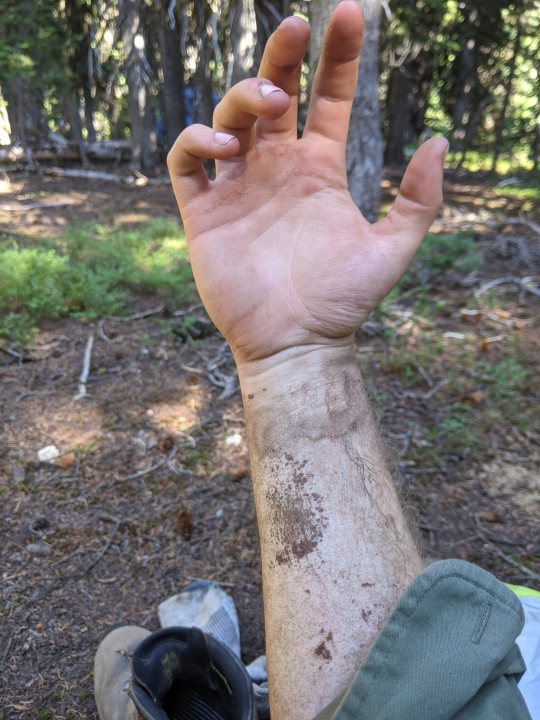


The habitat restoration I've done has generally involved the removal of invasive plants & the planting/seeding of natives. This is also pretty intense physical work! You might have to get certified/trained in working with herbicides, which are sometimes a necessary tool in fighting invasive plants. Hack-splash or drill-fill are the most commonly used herbicide techniques in restoration, because broadcast dispersion is considered a last resort. That involves individually treating each invasive plant with herbicide, using minimal amounts and concentrations to limit the effect on the surrounding ecosystem. The two biggest restoration projects I've worked on are the re-planting of disturbed alpine meadows (50K plants in about six weeks) and the removal of invasive coconut monocultures from native rainforest (hacking down palms with a machete, and spraying/injecting the cut stump with a small amount of herbicide to prevent it from coming back).


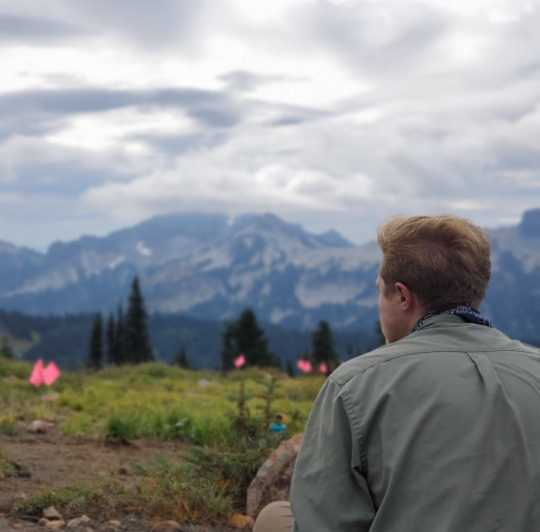
My biological fieldwork has been mostly marine-oriented - I've done a lot of work with seabirds, as well as coral reef survey & tagging sharks, mantas, tuna, and dolphins. My seabird work involved monitoring nesting colonies (counting babies, tracking growth) with some tagging, banding, and sample collection as well. The seabirds I worked most with were several different booby species, Greater Frigatebirds, Red & White-tailed Tropicbirds, noddies (both black and brown), & terns (white & sooty). Most of the marine tagging I did was using handline fishing techniques, and required me to have a lot familiarity with/certifications for boat operation & seamanship. Biological fieldwork has definitely been lower labor-intensive than trail work or restoration, but still requires a lot of hiking & hauling gear around remote (& sometimes treacherous) terrain! You will also have really intimate exposure to animal bodies and death, and will probably (definitely) get pooped on/thrown up on/bled on at some point.

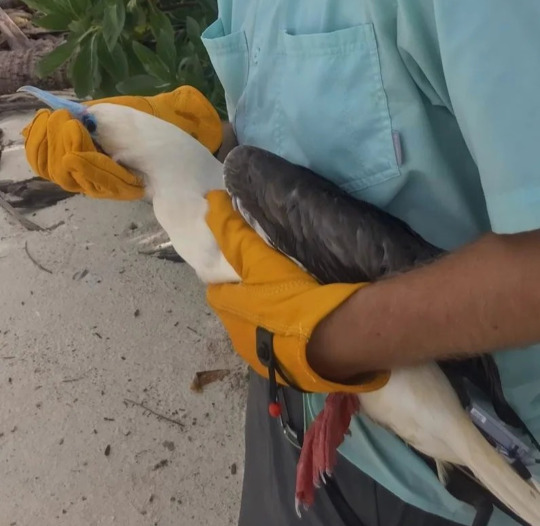

A big common theme throughout these kinds of jobs is the ability to work in small groups, in isolated places, for long periods at a time. I hope this was the kind of information you were looking for in terms of what the actual work is! Feel free to reach out/message me if this didn't actually answer your questions <3
#sorry this got so long!#beckett.txt#asks#conservation#conservation work#anonymous#id is in alt text!#beckett.jpg#faq#dirtbag tag
128 notes
·
View notes
Text
Mermay Day 2: Carnivorous

In the Farquhar Atoll (Seychelles), giant trevallies hunt juvenile sooty terns that are learning to fly. They actually leap out of the water and rip the little dudes out of the sky! First thing that came to mind when I got this prompt
14 notes
·
View notes
Text
Blown off course and washed away, wildlife hit by hurricanes (Washington Post)
Excerpt from this Washington Post story:
Hurricanes Helene and Milton blew long-winged sooty terns and high-flying frigatebirds hundreds of miles away from their ocean comfort zones into Indiana, Kentucky and other inland states.
Helene interrupted the migration of more than 100 million birds crossing over Alabama, and triggered floods that swept thousands of North Carolina’s 30-inch-long hellbender salamanders to their deaths.
And it is very likely that some of Florida’s beloved manatees have been stranded or trapped by the hurricanes and their aftermath.
It has been a wild ride for the wildlife in hurricane country.
As swaths of the southern United States recover from the aftermath of two hurricanes that left millions without power and killed hundreds of people, ecologists and biologists are working to understand the impact the devastating storms have had on wildlife.
A few animals have capitalized on the destruction. North Carolina’s black bears have been nosing through the open doors of shattered structures in search of groceries now suddenly available. Far more animals have been displaced or killed.
Falyn Owens, a North Carolina extension biologist, said that “the biggest impact from Hurricane [Helene] that we know of so far has been species that have been basically swept out of their natural habitat either by the water, for aquatic species, or by the air itself, especially for migratory birds.”
Just how great a toll the hurricanes took on birds migrating south to spend the winter months in the Caribbean, Mexico and South America is not yet known. The first and possibly strongest indication may be feathers washing up on beaches along the Gulf Coast.
Farnsworth estimates that 150 to 275 species were in the midst of migration during the hurricanes, including magnolia warblers, American redstarts, green herons, Baltimore orioles and Swainson’s thrushes.
In a pinch, many do the bird equivalent of pulling over at a Motel 6: They find a small hole in a tree or the convenient eaves of a three-bedroom Victorian and ride out the storm.
“A lot of birds do die,” Farnsworth said. “They get exhausted and fall or get pushed into the water. These small songbirds can occasionally land on the surface of the ocean, but when there’s a hurricane they do not do well.”
5 notes
·
View notes